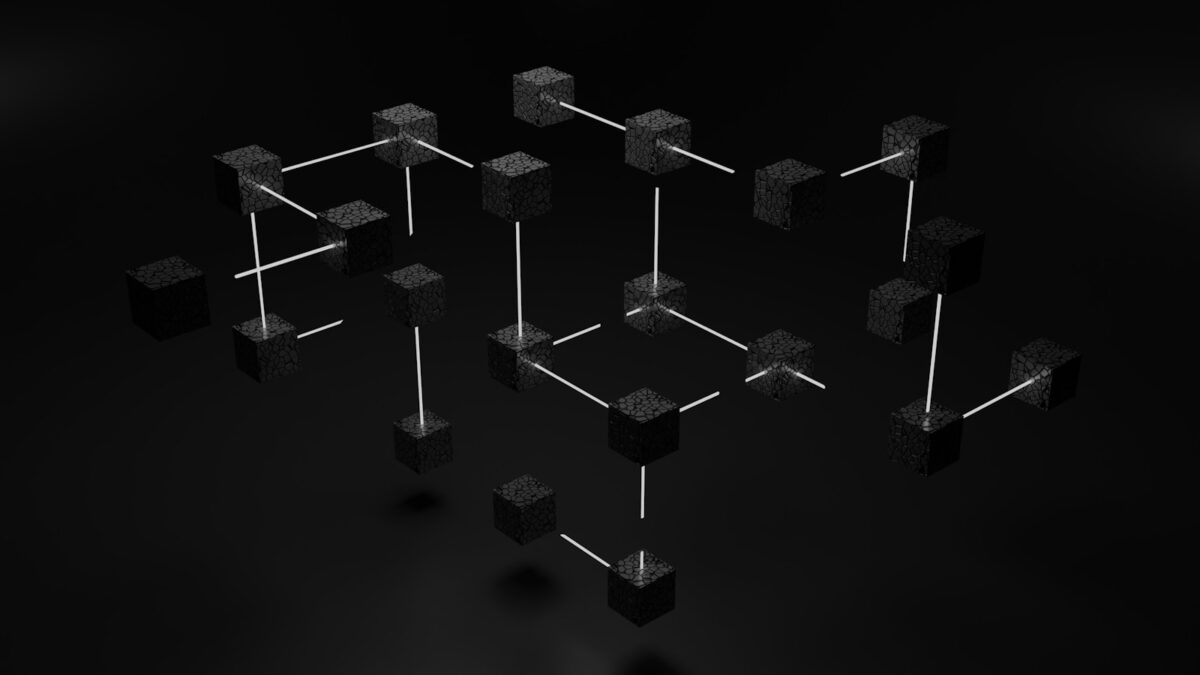
Blockchain validation process

Transactions must comply with a defined set of rules before they are accepted by the network. Each participating node independently verifies incoming data, ensuring that no invalid or double-spent transactions enter the ledger. This verification culminates in assembling a valid block, which represents an agreed-upon batch of activity.
The agreement among nodes arises from a rigorous method of reaching consensus. This collective decision-making guarantees uniformity across all copies of the ledger, preventing forks and inconsistencies. Nodes use algorithmic protocols to validate block integrity, confirm transaction authenticity, and maintain network security.
The entire sequence–from receiving a transaction to its final inclusion–relies on systematic checks aligned with protocol specifications. Understanding each stage reveals how decentralized systems enforce trust without centralized intermediaries. Experimenting with different consensus algorithms exposes their impact on speed, reliability, and fault tolerance within these peer-to-peer networks.
Blockchain validation process
The confirmation of transactions within a decentralized ledger relies on a systematic verification mechanism that ensures every entry adheres strictly to predefined protocol rules. This mechanism involves a network of nodes that collectively execute checks on each proposed record, examining its authenticity and consistency before integrating it into an immutable chain. The agreement among these nodes is fundamental to maintaining integrity and trust without centralized oversight.
Each new record, often referred to as a block, undergoes rigorous scrutiny involving cryptographic proofs and transactional audits. Nodes independently assess whether the data complies with consensus algorithms designed to prevent double-spending, invalid signatures, or any form of tampering. Only after this comprehensive examination does the system reach a unified decision to accept or reject the addition.
Consensus Algorithms and Network Agreement
Consensus models such as Proof of Work (PoW), Proof of Stake (PoS), and Byzantine Fault Tolerance (BFT) variants enable distributed networks to synchronize their state across geographically dispersed nodes. These protocols establish strict criteria for validating blocks, ensuring all participants operate under an identical set of rules. For example, in PoW systems like Bitcoin, miners solve computational puzzles to propose valid blocks, while in PoS frameworks such as Ethereum 2.0, validators stake assets as collateral for proposing legitimate entries.
The adherence to these protocols facilitates an agreement that prevents conflicting versions of transaction histories from emerging. This collective endorsement is critical; without it, forks or discrepancies could undermine system reliability. Detailed case studies show how BFT-based consensus maintains operational continuity even when up to one-third of nodes act maliciously or fail unexpectedly.
- Node Role: Evaluate incoming transaction data against protocol specifications.
- Verification Steps: Check digital signatures, ensure no double-spending occurs.
- Block Formation: Aggregate verified transactions into candidate blocks.
- Consensus Participation: Collaborate with other nodes to confirm block validity.
The chronological linkage between blocks depends heavily on the accuracy of previous validations; each subsequent record contains references–hash pointers–to its predecessor. This chaining enforces immutability since altering any single block would require recalculating all following hashes under network consensus constraints, an endeavor practically infeasible at scale.
The integrity guarantee emerges from the combination of cryptographic safeguards and distributed cooperation among independent actors who continuously verify each other’s work according to established protocols. Exploring experimental variations in consensus mechanisms reveals trade-offs between scalability, security resilience, and energy consumption–a dynamic area inviting further empirical study for optimized deployment scenarios worldwide.
Consensus Algorithms Comparison
The choice of consensus algorithm directly influences the network’s ability to reach agreement on transaction legitimacy and block formation. Proof of Work (PoW) enforces a strict computational challenge as its core rule, requiring nodes to solve cryptographic puzzles before proposing a new block. This mechanism ensures that the verification of transactions is resource-intensive, discouraging malicious activity by making attacks economically unfeasible. PoW networks like Bitcoin demonstrate high security but suffer from energy inefficiency and slower confirmation times due to the complexity of their validation requirements.
In contrast, Proof of Stake (PoS) replaces computational work with economic stake as the basis for consensus. Validators are selected proportionally to their ownership in the native token, aligning incentives toward maintaining network integrity during block verification. By limiting the need for continuous heavy computation, PoS achieves faster agreement among participants while significantly reducing energy consumption. However, this approach introduces challenges related to initial stake distribution and potential centralization risks within the network.
Technical Overview and Comparative Analysis
Delegated Proof of Stake (DPoS) enhances PoS by introducing a voting system where stakeholders elect a limited number of delegates responsible for transaction approval and block creation. This modification accelerates consensus rounds and improves scalability by reducing communication overhead among nodes. EOS exemplifies DPoS implementation, boasting high throughput but raising questions about decentralization since fewer validators hold substantial power over agreement enforcement.
Practical Byzantine Fault Tolerance (PBFT) offers an alternative model focused on rapid consensus within permissioned environments. Nodes exchange multiple rounds of messages to ensure that all honest participants agree on transaction order despite some faulty or malicious actors. PBFT excels in environments requiring deterministic finality and low latency but struggles with scalability due to communication complexity growing quadratically with network size.
The effectiveness of each method depends heavily on intended application scenarios and network composition. For public networks demanding open participation, PoW remains robust despite inefficiencies; meanwhile, consortium or private settings benefit from PBFT’s rapid confirmation capabilities under controlled membership conditions. Hybrid models blending multiple algorithms also emerge, aiming to optimize security, speed, and fairness simultaneously.
A deeper investigation into transaction finality reveals fundamental differences: probabilistic finality in PoW contrasts with immediate finality in PBFT-based frameworks. This distinction shapes how users perceive transaction irreversibility and influences design choices for applications handling sensitive financial data or critical operational commands. Experimentation through testnets can provide practical insights into performance trade-offs under varying load conditions and adversarial behaviors.
Transaction verification steps
To confirm a transaction’s legitimacy within a decentralized network, nodes first verify its compliance with predefined agreement rules. Each participating node checks whether the transaction inputs are unspent and correctly signed, ensuring no double-spending attempts. This initial scrutiny filters out invalid entries before inclusion in a candidate block for further assessment.
Once individual nodes validate transactions locally, they broadcast them across the network to reach consensus. Nodes collectively compare their results, applying protocol-specific algorithms–such as Proof of Work or Proof of Stake–to achieve agreement on which transactions are acceptable. This coordination guarantees that only verified transactions are added to the ledger while maintaining synchronization among distributed participants.
Detailed examination of transaction confirmation
The next step involves grouping validated transactions into blocks by specialized nodes commonly called miners or validators. These entities compile transactions adhering to network-imposed constraints like maximum block size and timestamp validity. After assembling a block, the node initiates a competition mechanism where complex mathematical puzzles or stake-based criteria determine which block gains acceptance from peers.
Upon successful completion of this selection phase, nodes propagate the winning block throughout the system. Each participant independently re-examines the contained transactions against consensus rules before appending it to their local copy of the chain. This iterative consensus reinforces trustworthiness and immutability, allowing users and applications to rely confidently on confirmed transaction records stored permanently across all active copies of the network.
Role of Cryptographic Signatures
Cryptographic signatures serve as the cornerstone for ensuring integrity and authenticity within distributed ledgers. Each transaction broadcast across the network carries a unique signature generated by the sender’s private key, enabling nodes to perform rigorous verification. This mechanism enforces compliance with predetermined rules, allowing participants to trust data without centralized oversight.
The agreement on whether a block and its contents are valid hinges on verifying these signatures. Without cryptographic signatures, malicious actors could inject fraudulent transactions or alter existing ones undetected. Consequently, this verification step is indispensable for sustaining reliable consensus among decentralized participants.
The Mechanics of Signature Verification in Distributed Systems
The signature attached to each transaction results from applying an algorithm such as ECDSA (Elliptic Curve Digital Signature Algorithm) or EdDSA over the transaction hash. When a node receives a proposed block, it recalculates the transaction hash and checks the signature against the public key linked to the sender’s address. Successful validation confirms that the transaction was authorized by the rightful owner and remains unaltered during transmission.
This procedure supports nodes in enforcing network protocols meticulously. For example, if even one transaction within a block fails signature verification, nodes reject that block entirely, maintaining strict adherence to consensus rules. This filtering preserves ledger consistency and prevents invalid data propagation.
- Transaction Integrity: Ensures that transaction details remain unchanged after signing.
- User Authentication: Confirms that only legitimate owners authorize asset transfers.
- Non-repudiation: Prevents senders from denying their signed transactions later.
A practical case study arises in permissionless systems where millions of nodes independently verify blocks before reaching consensus. Here, cryptographic signatures facilitate rapid agreement despite network latency or adversarial attempts at double-spending. Each node applies identical verification logic, resulting in uniform acceptance or rejection outcomes critical for system security.
Certain advanced implementations incorporate threshold signatures or multisignature schemes to enhance security by requiring multiple parties’ approval before accepting transactions into blocks. These methodologies distribute trust across several entities, reducing risks posed by single points of failure while still upholding stringent cryptographic guarantees during agreement cycles.
The ongoing evolution of signature algorithms aims to optimize computational efficiency without compromising security standards. Emerging elliptic curve variants and post-quantum resistant techniques promise faster verifications for large-scale networks consisting of thousands of validating nodes coordinating complex sets of transactions toward collective agreement states governed by strict protocol rules.
Node responsibilities in validation
Nodes play a pivotal role in maintaining the integrity and security of the network by executing verification tasks that uphold the consensus rules. Each node independently examines incoming transactions and blocks, ensuring they comply with predefined protocol standards before propagating them further. This decentralized scrutiny forms the backbone of achieving agreement across distributed participants without reliance on a central authority.
The process begins when nodes receive new data from peers; they conduct thorough checks against the established rules, including signature verification, double-spending prevention, and format correctness. By rejecting invalid transactions or blocks, nodes prevent malicious actors from compromising the ledger’s accuracy. This continuous filtering ensures that only valid entries contribute to the chain’s growth, reinforcing trust within the network.
Technical functions of nodes in reaching consensus
Nodes collectively participate in a consensus mechanism designed to finalize which candidate block is accepted into the ledger. The agreement emerges from multiple independent verifications, where nodes broadcast their acceptance or rejection based on strict compliance with algorithmic criteria. For example, in Proof-of-Work systems, miners (specialized nodes) solve cryptographic puzzles while full nodes verify the resulting block’s adherence to transaction validity and timestamp constraints.
This collaborative evaluation mitigates risks associated with conflicting data or forks by converging on a single authoritative history. Nodes maintain mempools containing unconfirmed transactions and update these pools dynamically as new blocks arrive and transactions are confirmed or discarded. Such synchronization requires precise coordination governed by protocol rules to align network state among geographically dispersed participants.
Empirical studies reveal that node distribution influences latency and finality timeframes; geographically diverse nodes can detect discrepancies faster but may experience propagation delays affecting temporary forks. Experimenting with different node configurations uncovers trade-offs between decentralization robustness and operational efficiency. Researchers encourage running dedicated full nodes to strengthen network resilience through enhanced verification coverage and timely consensus participation.
Handling Fork and Conflicts: Technical Insights and Future Directions
The resolution of forks hinges on strict adherence to predefined rules that govern the behavior of nodes during the agreement phase. When conflicting branches emerge, it is the collective scrutiny of individual participants through continuous verification that determines which sequence of transactions gains acceptance. This dynamic interplay ensures that only one authoritative version persists, preserving network integrity.
A robust mechanism for conflict management relies on a multi-layered approach combining rule enforcement with incentive-compatible protocols. Practical examples include longest-chain selection in Proof-of-Work systems and finality gadgets in Proof-of-Stake variants, both designed to streamline consensus by minimizing ambiguity in competing blocks. The synchronization between distributed nodes during this arbitration facilitates seamless reconciliation without compromising decentralization or security.
Key Takeaways and Emerging Trends
- Rule Consistency: Uniform application of validation criteria across all nodes is paramount. Divergence leads to persistent forks and potential fragmentation.
- Node Cooperation: Efficient communication channels among network participants accelerate convergence toward a single ledger state.
- Adaptive Verification: Incorporating real-time anomaly detection within transaction vetting processes mitigates risks posed by malicious forks or accidental conflicts.
- Consensus Layer Evolution: Innovations such as optimistic rollups and sharding introduce new complexities requiring refined fork-handling strategies tailored to their unique operational models.
- Ecosystem Impact: Effective conflict resolution mechanisms enhance user trust, reduce latency in transaction finality, and foster broader adoption across diverse applications.
The trajectory of network architectures suggests increasing reliance on hybrid frameworks where probabilistic validations coexist with deterministic checkpoints, thus balancing throughput with security assurances. Encouraging experimentation with these constructs can illuminate optimal configurations for scaling while maintaining coherence amid transient discrepancies.
Pursuing deeper understanding of node behavior under stress conditions–such as sudden topology changes or targeted attacks–will yield insights necessary for next-generation protocols. Researchers and developers are invited to design test environments simulating fork scenarios to refine algorithms governing consensus formation. This iterative process promises advancements in automated dispute resolution mechanisms, ultimately contributing to resilient decentralized infrastructures capable of sustaining complex transactional ecosystems globally.


